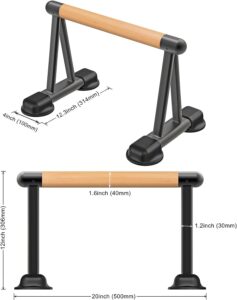Have you ever wondered if calisthenics can help you shed those extra pounds? Well, the answer might just be a resounding yes! In this article, we will explore the potential benefits of incorporating calisthenics into your weight loss journey. Calisthenics, a form of bodyweight exercise, not only strengthens and tones your muscles but can also torch calories, increase your metabolism, and improve cardiovascular health. Get ready to learn how this dynamic and versatile workout method can assist you in achieving your weight loss goals!

This image is property of themovementathlete.com.
What is Calisthenics?
Calisthenics is a form of exercise that focuses on using your own body weight for resistance training. It is a versatile and effective workout that can be done anywhere, without the need for expensive equipment or a gym membership. Calisthenics exercises include moves such as push-ups, pull-ups, squats, lunges, and planks. The goal is to build strength, improve cardiovascular health, enhance flexibility, and boost metabolism through a series of body weight movements.
Benefits of Calisthenics
Increased Muscle Strength
One of the key benefits of calisthenics is the opportunity to build and increase muscle strength. By using your own body weight as resistance, you can target specific muscle groups and progressively overload them to stimulate growth. Moves like push-ups, pull-ups, and squats engage multiple muscle groups, including the chest, back, arms, legs, and core. Regularly incorporating calisthenics into your fitness routine can lead to noticeable improvements in muscle strength over time.
Improved Cardiovascular Health
Calisthenics is not just about building muscle strength; it also has significant cardiovascular benefits. Many calisthenics exercises are designed to get your heart rate up and increase your breathing rate, which helps to improve your cardiovascular health. Movements like jumping jacks, mountain climbers, and burpees are examples of calisthenics exercises that elevate your heart rate and provide a cardio workout. Regular calisthenics training can lead to a stronger heart, improved lung capacity, and increased endurance.
Enhanced Flexibility
Flexibility is important for maintaining good posture, preventing injuries, and improving overall mobility. Unlike traditional weightlifting, which can sometimes limit flexibility, calisthenics promotes it. Moves like lunges, planks, and yoga-inspired stretches in a calisthenics routine can improve your flexibility over time. By gradually increasing the range of motion in your joints and lengthening your muscles through calisthenics exercises, you can achieve a greater level of flexibility.
Boosted Metabolism
Calisthenics workouts are intense and can elevate your metabolic rate. This means that even after you have finished your workout, your body continues to burn calories at a higher rate than it would at rest. This phenomenon, known as excess post-exercise oxygen consumption (EPOC), can lead to increased calorie burn for hours or even days following your calisthenics session. By incorporating calisthenics into your weight loss routine, you can boost your metabolism and create a calorie deficit, which is essential for shedding extra pounds.

This image is property of hips.hearstapps.com.
Calisthenics and Weight Loss
Now that we understand the various benefits of calisthenics, let’s explore how it can help with weight loss. Calisthenics is an effective form of exercise for weight loss because it combines strength training with cardiovascular exercise. By engaging multiple muscle groups and elevating your heart rate, it helps to burn calories and fat. Additionally, the increased muscle mass gained through calisthenics can also contribute to weight loss by increasing your resting metabolic rate.
Calories Burned in Calisthenics
The number of calories burned during a calisthenics workout depends on various factors, such as the intensity of the exercises, your body weight, and the duration of the workout. Here are estimates of the calories burned in two different types of calisthenics workouts:
Intense Calisthenics Workouts
An intense calisthenics workout, which includes high-intensity exercises like burpees, HIIT (high-intensity interval training) routines, and explosive movements, can burn a significant amount of calories. On average, a person weighing 155 pounds can burn approximately 373 calories in a 30-minute intense calisthenics session. The more effort you put into your workout, the more calories you can expect to burn.
Moderate Calisthenics Workouts
Not all calisthenics workouts have to be intense to be effective for weight loss. Moderate calisthenics workouts, which include exercises like push-ups, squats, and planks performed at a steady pace, can also contribute to calorie burn. For a 155-pound individual, a 30-minute moderate calisthenics workout can burn around 211 calories. Remember, consistency is key for achieving weight loss goals, so even moderate workouts can make a difference when done regularly.

This image is property of i.ytimg.com.
Calisthenics and High-Intensity Interval Training (HIIT)
High-Intensity Interval Training (HIIT) is a training method that involves alternating between intense bursts of exercise and short recovery periods. Calisthenics can be effectively combined with HIIT to maximize weight loss efforts. By incorporating high-intensity calisthenics exercises into the intervals of a HIIT workout, you can push your body to its limits, burn more calories, and stimulate fat loss. This combination of strength training and cardiovascular exercise creates an effective calorie-burning session.
Circuit Training with Calisthenics
Circuit training involves performing a series of exercises with minimal rest in between. It can be an excellent way to incorporate calisthenics into a weight loss routine. By designing a circuit that combines various calisthenics movements, such as push-ups, lunges, and planks, you can create a full-body workout that targets multiple muscle groups while keeping your heart rate elevated. Circuit training with calisthenics can provide the benefits of strength training, cardiovascular exercise, and calorie burn in one efficient session.

This image is property of calisthenics-family.com.
Calisthenics for Maintenance of Weight Loss
Weight loss is not just about shedding unwanted pounds; it’s also about maintaining a healthy weight in the long term. Calisthenics can play a pivotal role in weight maintenance after you have reached your goal. Continuing with a regular calisthenics routine can help preserve the muscle mass you have gained, keep your metabolism elevated, and support overall fitness. The versatility and accessibility of calisthenics make it a sustainable exercise option for maintaining weight loss.
Incorporating Calisthenics into Your Weight Loss Routine
When incorporating calisthenics into your weight loss routine, keep the following tips in mind:
Setting Realistic Goals
Set realistic and achievable goals to avoid disappointment and stay motivated. Calisthenics may take time to master, so start with beginner-friendly exercises and gradually progress to more challenging movements. Focus on progress rather than perfection, and celebrate your accomplishments along the way.
Designing a Calisthenics Workout Plan
Plan your calisthenics workouts to ensure that you are targeting different muscle groups and challenging yourself. Include a mix of strength-focused exercises, cardiovascular exercises, and flexibility-focused movements. Aim for a well-rounded routine that covers all aspects of fitness.
Combining Calisthenics with Other Exercises
While calisthenics can be a standalone workout, you can also incorporate it into a wider fitness routine. Combine it with other forms of exercise, such as running, cycling, or swimming, to create a diverse and balanced program. This can prevent boredom and provide additional cardiovascular benefits.

This image is property of themovementathlete.com.
The Role of Nutrition in Calisthenics and Weight Loss
While calisthenics can aid in weight loss, nutrition plays a crucial role in achieving your fitness goals. Here are some key factors to consider:
Balanced Diet for Weight Loss
To lose weight effectively, it is important to consume a balanced diet that consists of lean proteins, whole grains, fruits, vegetables, and healthy fats. Incorporating a variety of nutrient-dense foods will provide the energy needed for your calisthenics workouts and support overall health.
Importance of Hydration
Staying hydrated is essential for proper bodily function during exercise. Drink water before, during, and after your calisthenics sessions to prevent dehydration. Adequate hydration can also help regulate your appetite and support weight loss efforts.
Pre-Workout and Post-Workout Nutrition
Fuel your body before a calisthenics workout by consuming a balanced meal or snack that includes carbohydrates for energy and protein for muscle repair and recovery. After your workout, prioritize protein-rich foods to aid in muscle recovery and growth. Consider incorporating smoothies, protein shakes, or lean meats into your post-workout routine.
Conclusion
Calisthenics is a highly effective form of exercise for weight loss that offers numerous benefits, including increased muscle strength, improved cardiovascular health, enhanced flexibility, and boosted metabolism. By incorporating calisthenics into your weight loss routine and combining it with other exercises, you can achieve your fitness goals and maintain a healthy weight in the long term. Remember to set realistic goals, design a well-rounded workout plan, and prioritize proper nutrition to maximize your weight loss efforts. Start your calisthenics journey today and enjoy the transformative power of this accessible and efficient workout style.





